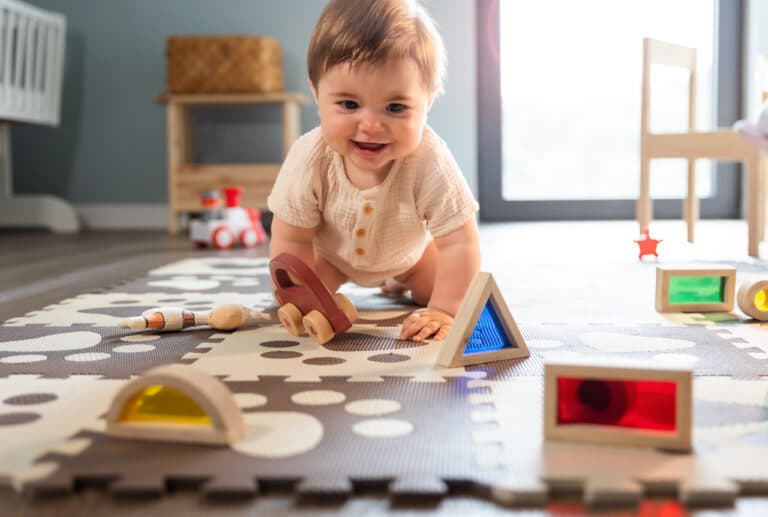Have you ever wondered how you can reduce your carbon footprint and reduce your monthly energy bill in the process?
As everyone is becoming increasingly aware of the climate crisis humanity will face if we don’t transition to a greener lifestyle, making your home more energy efficient is more important now than ever.
Luckily, in today’s world, we are fortunate to be surrounded by innovation. Appliances consume less energy, and windows and other materials are built to provide better insulation. Even smart gadgets can help us make our homes more environmentally friendly, and there are also a few simple tweaks you can make if you’re on a budget.
Here are 10 ways you can make your home more energy-efficient – and making these changes to your home will help you save money in the long run, too!
In This Article
- 1. Consider Replacing Your Windows
- 2. Improve Your Insulation
- 3. Swap Out Your Incandescent Bulbs for CFLs
- 4. Invest in Energy-Efficient Appliances
- 5. Don’t Use Appliances if You Don’t Have To
- 6. Install Solar Panels
- 7. Replace Your Old Furnace
- 8. Automate Your Energy Usage
- 9. Make Your Water Heating System More Efficient
- 10. Schedule an Energy Audit
1. Consider Replacing Your Windows
The windows you have in your home can make a huge difference when it comes to climate control. Older windows are just less energy-efficient than newer ones.
In terms of insulation, vinyl frames and double-paned windows are much more efficient at keeping your indoor climate-controlled than aluminum frames and single-pane windows.
If calling a window installation company to get your old windows replaced isn’t an option, consider tinting them. Tinted windows will reduce residual heat in your home by as much as 80% in the hot summer months – and it’s much cheaper than replacing your current windows with double-paned ones.
2. Improve Your Insulation
When making your home more energy-efficient, insulation is key. Insulation installation improves and regulates the temperature inside your home when it’s hot or cold outside. If your insulation is insufficient, your heating and cooling system will have to work much harder to keep the indoor climate under control – which means that it will use more energy.
Check your insulation – weatherstrip any areas that are lacking, and add foam or caulk reinforcements around windows, floors, doors, ceilings, crawl space, and attic to seal any air leaks. You can do the insulation yourself or call a professional to do it for you.
3. Swap Out Your Incandescent Bulbs for CFLs
If you have older light bulbs in your house, you may be using a lot more energy on lighting than is necessary. Switching over to compact fluorescent bulbs (CFLs) can reduce your energy consumption and save you money in the long run.
CFLs last up to 12 times longer than older incandescent bulbs, and they only use a quarter of the energy – in fact, a CFL bulb can last for 10,000 hours and uses around 27 watts to generate the same amount of light as a 100-watt incandescent bulb.
Although a CFL bulb costs more upfront because it costs more than an incandescent bulb, it will be much cheaper in the long term.
4. Invest in Energy-Efficient Appliances
When you replace your appliances, choose Energy Star products. Appliances such as refrigerators, air conditioners, stoves, and televisions with the Energy Star logo use 10 to 50% less energy than their standard counterparts.
Although Energy Star certified appliances may cost a little more, they will more than make up for the extra expense in the long run because your energy bill will decrease.
5. Don’t Use Appliances if You Don’t Have To
Even if you do have energy-efficient appliances, try to use them as infrequently as you can. Try to only run large appliances like dryers and dishwashers in the evening so that you remember to switch them off when they have finished their cycle.
Using the air-dry function on your washing machine and dishwasher can also help reduce your energy consumption – and using a clothesline instead of a dryer to dry your clothes is even better. Keeping your thermostat consistent will also save energy.
You should also unplug all electronics that are not in use – devices like phone chargers, televisions, PVRs, gaming consoles, and cable boxes still use energy, even if they are not plugged into anything.
6. Install Solar Panels
Solar panels should be considered an investment – if you can afford them. As people become more aware of the climate crisis, solar panels are becoming increasingly popular.
Solar panels can generate enough energy from the sun’s rays to heat water and power our homes – they are a greener alternative to fossil fuels, but the benefits don’t stop there. Installing solar panels will cut your electricity bill, and you may also qualify for tax incentives.
7. Replace Your Old Furnace
If your furnace was installed before 1992, chances are it’s wasting around 35% of the fuel it consumes, and it’s probably near the end of its life anyway.
Unless you live in a tropical climate, replace it with a condensing furnace – this kind of furnace wastes only around 10% of the fuel it uses, and it can cut your heating bill down by 27%.
8. Automate Your Energy Usage
Investing in a thermostat that works on a timer is a highly efficient way to reduce your energy usage – it can reduce your energy bill by around 15%. Smart thermostats are programmed to “learn” your habits and adjust the temperature accordingly.
If, for instance, you turn the thermostat down before bed at 11 PM, a smart thermostat will adjust it at that time automatically.
You can control a smart thermostat remotely with an app – even if you’re not at home. Smart thermostats are an excellent way to maintain your heating and cooling if your schedule changes unexpectedly or if you’re not around to turn the thermostat down.
9. Make Your Water Heating System More Efficient
To improve your water heating system’s efficiency, turn the temperature to the “warm” setting (120 to 130 degrees Fahrenheit) – this temperature is more than sufficient for washing clothes and dishes.
Next, insulate your hot water lines so that your water will retain its temperature more efficiently between uses. Finally, install low-flow or water-saving fixtures in your bath and shower.
10. Schedule an Energy Audit
Once you’ve made all the changes you can to reduce your energy consumption, it’s time to call in the experts.
By taking advantage of an energy auditor’s specialized skills and tools, you can get recommendations about how to make your home even more energy-efficient. An energy auditor will usually charge by the hour or by the square footage of your home, but hiring a professional is well worth the investment.











